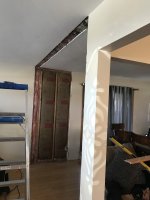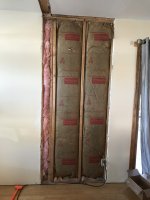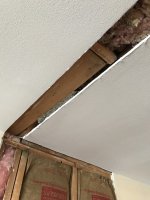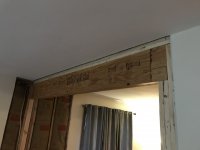Bugsysiegals
Member
- Joined
- Mar 19, 2016
- Messages
- 908
I'm remodeling my Dining Room and could use some feedback.
The previous owner tore down the wall separating the Dining/Living Rooms which supported the hip of the ceiling joists running N/S (front roof) joining the ceiling joists running W/E (side roof) and never put up a header!!! In addition, the Dining Room fireplace was removed and I've noticed whoever installed it cut through a rafter in order to vent it out the roof while "strengthening" it by running 2x4 perpendicular to the cut rafter tacking it to the rafters on either side and to the cut face of the rafter. FWIW - I can see the rafter is sagging/pulled away from the plywood a little bit and needs to be supported better.
All that said, I've a crack in the ceiling below the area of the cut rafter and had a vertical crack down the exterior wall in the same place. I've added additional basement ceiling joists below the existing support beam to strengthen it further (dining/kitchen wall removed and supported by a header), widened the vertical support beam, and added the header the previous owner failed to install in order to support this hip. I'll be redoing the roof in the next few years and consider to just tear off the plywood and replace the rafter in complete at that time ... is this how you would do it or would you doing something different such as gluing/lagging 2x10's on each side of the cut rafter to "sandwich" it?
I've torn down and put up new drywall on the exterior wall but have some gaps as I tried to level and fasten the sheet on my own. Not being an expert in drywall, are these gaps to large or can I simply fill in with some mud, tape, and move on? I don't want to deal with more cracks in the wall but if this is totally sufficient I'm happy to move on.
Standing in the hallway looking North
View attachment 1
Standing in the Kitchen looking East ... crack in the ceiling
View attachment 2
Living Room side of the header ... cut the drywall a bit more than I should've ... whoops!
View attachment 3
Dining Room side of the header ... gaps in the sheets on the walls
View attachment 4
Close up of the largest gap I have
View attachment 5
I've not yet drywall the South side of the Dining Room as my wife wants me to build cabinets and I'm not sure about the switches/outlets. I upgraded my existing 2-gang switch to a 4-gang and now have exterior motion light, dining room light, dim able canned lighting, and room for 1 more switch but am wondering about above/under lighting which would use 2 switches. If I run the cabinets to the ceiling I avoid up lighting and am fine but I've only 8 foot ceilings ... would you go to the ceiling? In the picture below, something my wife found and thinks would be nice, they've outlet in the wall whereas I've seen other people run Romex through a hole in the wall just above 54", and mounting an outlet or outlet strip in the bottom area of the cabinet ... what's the popular way of doing this?
FWIW - My Dining Room is 9' wide and 8' tall. I don't have a pantry and have a smaller kitchen so these cabinets will likely hold food, perhaps a few fancy dishes, and maybe stuff not used in the kitchen regularly. Here's some pictures of the Dining Room so you can get a better idea of things as well as what my wife has in mind. I'd love to hear feedback/suggestions from those of you who do this for a living and have seen many more homes than I have...
We've all wood in the house but something like this could be nice.
View attachment 9
Living Room looking South into Dining Room
View attachment 10
Kitchen looking South East into Dining Room
View attachment 6
Closeup looking SE
View attachment 7
Closeup looking SW
View attachment 8
The previous owner tore down the wall separating the Dining/Living Rooms which supported the hip of the ceiling joists running N/S (front roof) joining the ceiling joists running W/E (side roof) and never put up a header!!! In addition, the Dining Room fireplace was removed and I've noticed whoever installed it cut through a rafter in order to vent it out the roof while "strengthening" it by running 2x4 perpendicular to the cut rafter tacking it to the rafters on either side and to the cut face of the rafter. FWIW - I can see the rafter is sagging/pulled away from the plywood a little bit and needs to be supported better.
All that said, I've a crack in the ceiling below the area of the cut rafter and had a vertical crack down the exterior wall in the same place. I've added additional basement ceiling joists below the existing support beam to strengthen it further (dining/kitchen wall removed and supported by a header), widened the vertical support beam, and added the header the previous owner failed to install in order to support this hip. I'll be redoing the roof in the next few years and consider to just tear off the plywood and replace the rafter in complete at that time ... is this how you would do it or would you doing something different such as gluing/lagging 2x10's on each side of the cut rafter to "sandwich" it?
I've torn down and put up new drywall on the exterior wall but have some gaps as I tried to level and fasten the sheet on my own. Not being an expert in drywall, are these gaps to large or can I simply fill in with some mud, tape, and move on? I don't want to deal with more cracks in the wall but if this is totally sufficient I'm happy to move on.
Standing in the hallway looking North
View attachment 1
Standing in the Kitchen looking East ... crack in the ceiling
View attachment 2
Living Room side of the header ... cut the drywall a bit more than I should've ... whoops!
View attachment 3
Dining Room side of the header ... gaps in the sheets on the walls
View attachment 4
Close up of the largest gap I have
View attachment 5
I've not yet drywall the South side of the Dining Room as my wife wants me to build cabinets and I'm not sure about the switches/outlets. I upgraded my existing 2-gang switch to a 4-gang and now have exterior motion light, dining room light, dim able canned lighting, and room for 1 more switch but am wondering about above/under lighting which would use 2 switches. If I run the cabinets to the ceiling I avoid up lighting and am fine but I've only 8 foot ceilings ... would you go to the ceiling? In the picture below, something my wife found and thinks would be nice, they've outlet in the wall whereas I've seen other people run Romex through a hole in the wall just above 54", and mounting an outlet or outlet strip in the bottom area of the cabinet ... what's the popular way of doing this?
FWIW - My Dining Room is 9' wide and 8' tall. I don't have a pantry and have a smaller kitchen so these cabinets will likely hold food, perhaps a few fancy dishes, and maybe stuff not used in the kitchen regularly. Here's some pictures of the Dining Room so you can get a better idea of things as well as what my wife has in mind. I'd love to hear feedback/suggestions from those of you who do this for a living and have seen many more homes than I have...
We've all wood in the house but something like this could be nice.
View attachment 9
Living Room looking South into Dining Room
View attachment 10
Kitchen looking South East into Dining Room
View attachment 6
Closeup looking SE
View attachment 7
Closeup looking SW
View attachment 8
Attachments
-
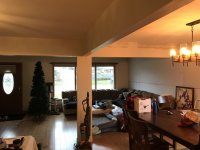 thumbnail_IMG_4406.jpg190.9 KB · Views: 465
thumbnail_IMG_4406.jpg190.9 KB · Views: 465 -
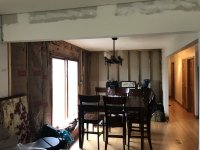 thumbnail_IMG_4395.jpg221.3 KB · Views: 411
thumbnail_IMG_4395.jpg221.3 KB · Views: 411 -
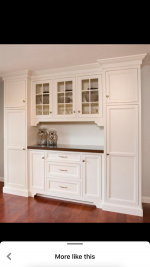 IMG_9602.png1.7 MB · Views: 367
IMG_9602.png1.7 MB · Views: 367 -
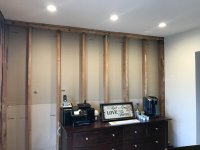 thumbnail_IMG_4397.jpg163.7 KB · Views: 346
thumbnail_IMG_4397.jpg163.7 KB · Views: 346 -
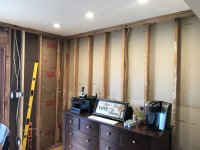 thumbnail_IMG_4398.jpg222.6 KB · Views: 399
thumbnail_IMG_4398.jpg222.6 KB · Views: 399 -
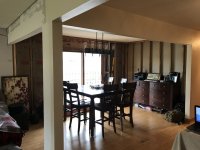 thumbnail_IMG_4396.jpg229.3 KB · Views: 360
thumbnail_IMG_4396.jpg229.3 KB · Views: 360 -
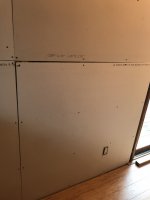 thumbnail_IMG_4400.jpg112 KB · Views: 486
thumbnail_IMG_4400.jpg112 KB · Views: 486 -
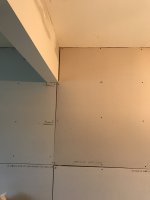 thumbnail_IMG_4402.jpg98.2 KB · Views: 689
thumbnail_IMG_4402.jpg98.2 KB · Views: 689 -
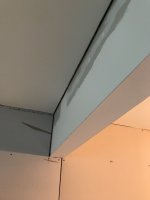 thumbnail_IMG_4403.jpg104.6 KB · Views: 686
thumbnail_IMG_4403.jpg104.6 KB · Views: 686 -
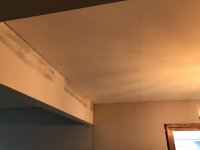 thumbnail_IMG_4405.jpg123.1 KB · Views: 453
thumbnail_IMG_4405.jpg123.1 KB · Views: 453

